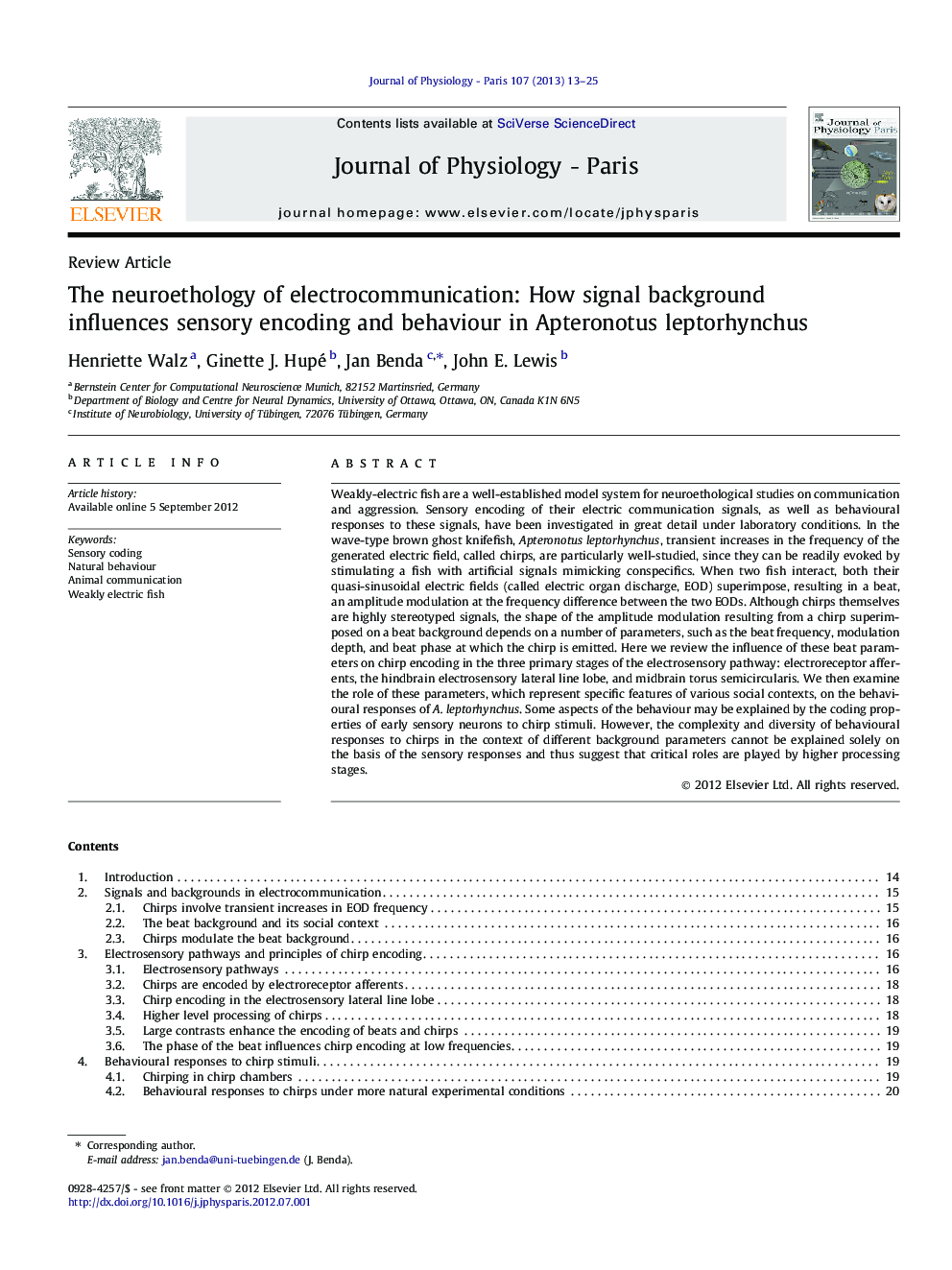| کد مقاله | کد نشریه | سال انتشار | مقاله انگلیسی | نسخه تمام متن |
|---|---|---|---|---|
| 2842190 | 1571025 | 2013 | 13 صفحه PDF | دانلود رایگان |

Weakly-electric fish are a well-established model system for neuroethological studies on communication and aggression. Sensory encoding of their electric communication signals, as well as behavioural responses to these signals, have been investigated in great detail under laboratory conditions. In the wave-type brown ghost knifefish, Apteronotus leptorhynchus, transient increases in the frequency of the generated electric field, called chirps, are particularly well-studied, since they can be readily evoked by stimulating a fish with artificial signals mimicking conspecifics. When two fish interact, both their quasi-sinusoidal electric fields (called electric organ discharge, EOD) superimpose, resulting in a beat, an amplitude modulation at the frequency difference between the two EODs. Although chirps themselves are highly stereotyped signals, the shape of the amplitude modulation resulting from a chirp superimposed on a beat background depends on a number of parameters, such as the beat frequency, modulation depth, and beat phase at which the chirp is emitted. Here we review the influence of these beat parameters on chirp encoding in the three primary stages of the electrosensory pathway: electroreceptor afferents, the hindbrain electrosensory lateral line lobe, and midbrain torus semicircularis. We then examine the role of these parameters, which represent specific features of various social contexts, on the behavioural responses of A. leptorhynchus. Some aspects of the behaviour may be explained by the coding properties of early sensory neurons to chirp stimuli. However, the complexity and diversity of behavioural responses to chirps in the context of different background parameters cannot be explained solely on the basis of the sensory responses and thus suggest that critical roles are played by higher processing stages.
► We review production and encoding of a type of electrocommunication signal called chirp.
► We consider the electrosensory background resulting from the presence of two fish.
► We discuss how social interactions shape both behavior and sensory encoding.
► The encoding properties can explain some aspects of the behavior.
► More knowledge of neural coding is necessary to understand the behavioural complexities.
Journal: Journal of Physiology-Paris - Volume 107, Issues 1–2, January–April 2013, Pages 13–25